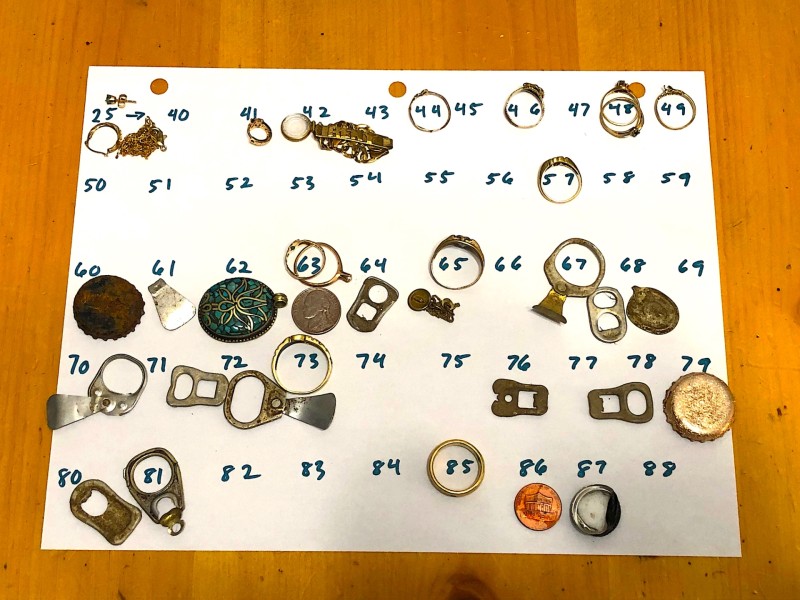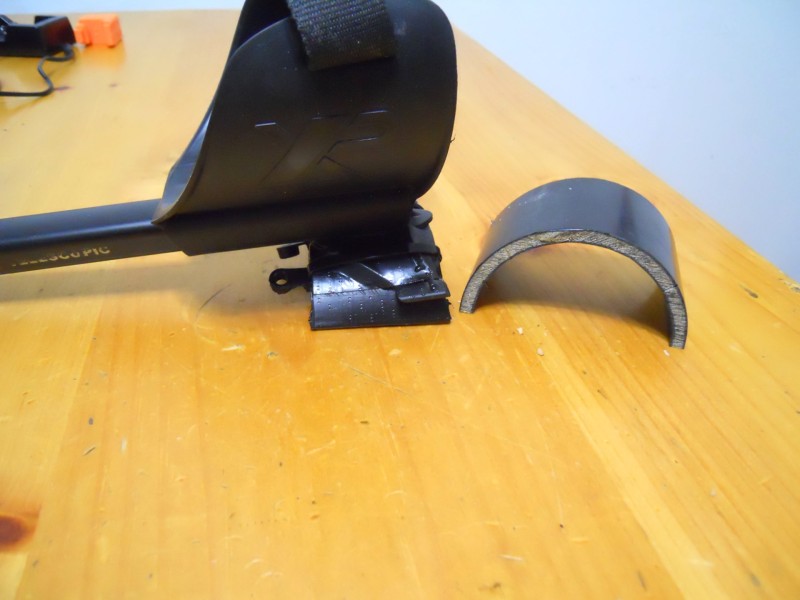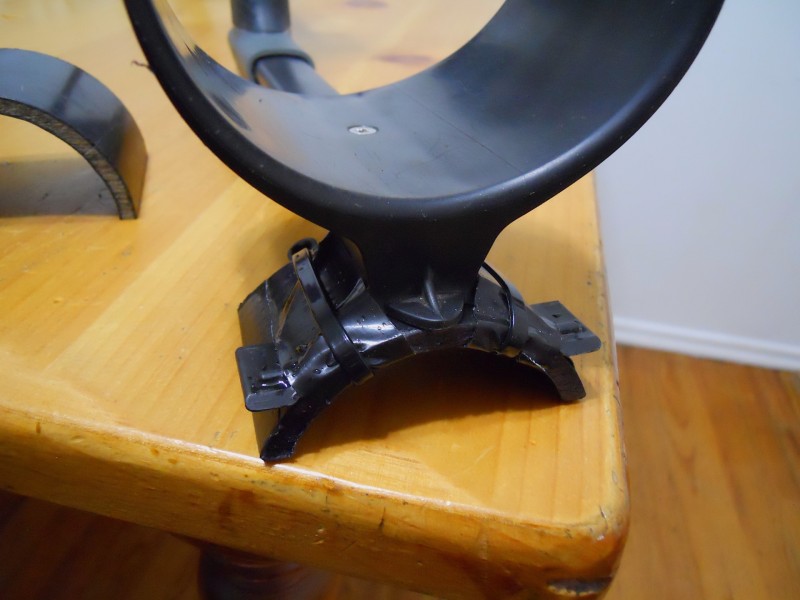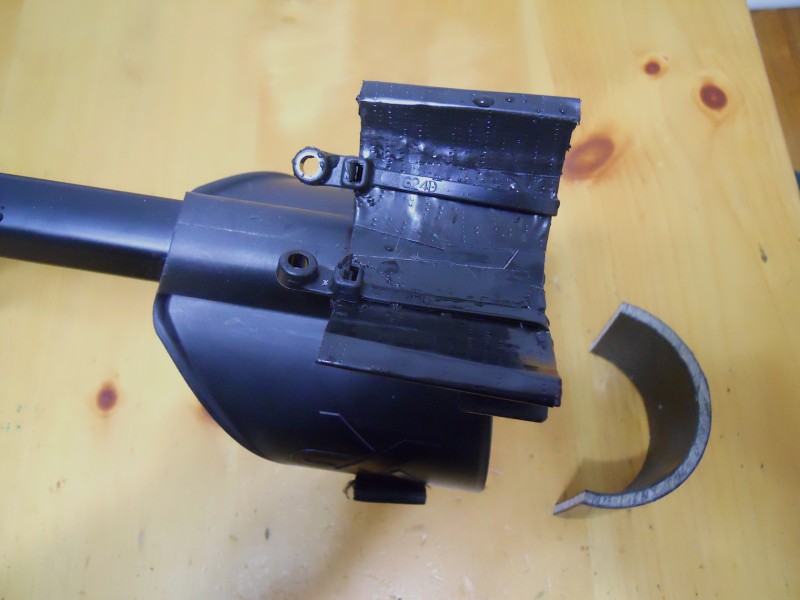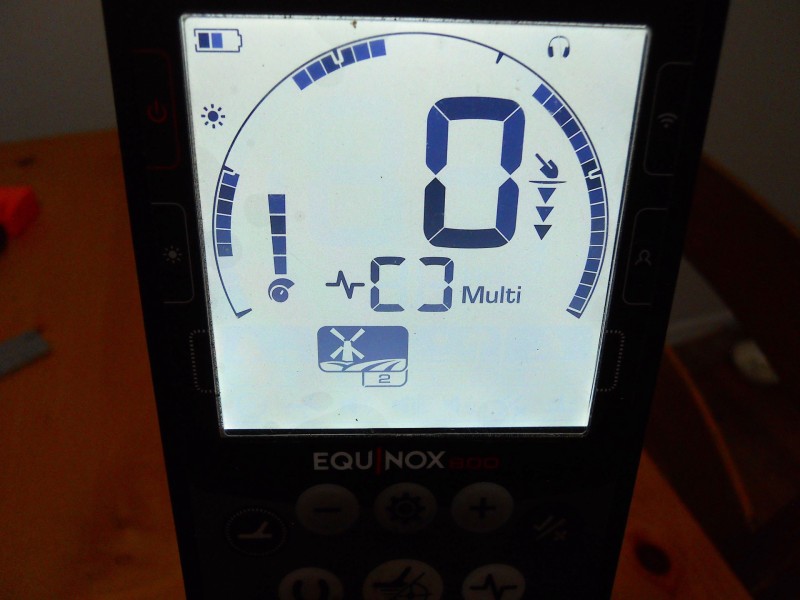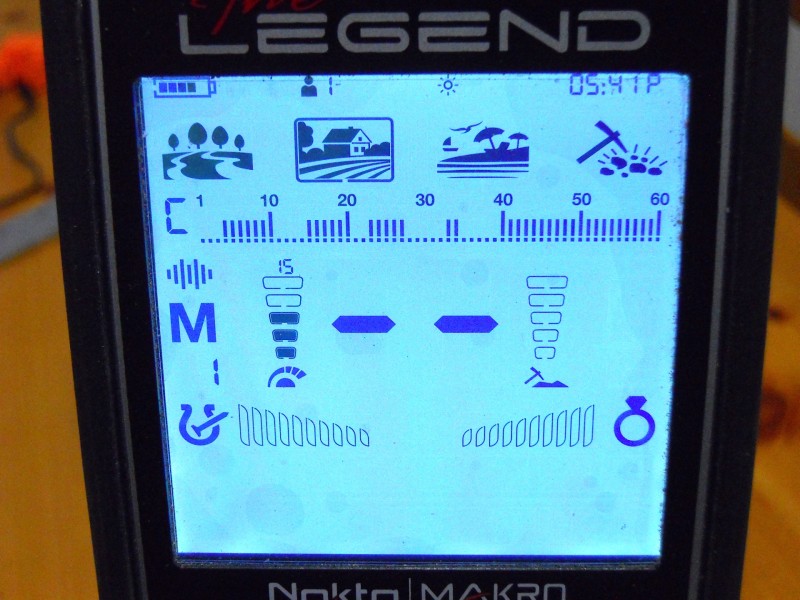-
Posts
3,192 -
Joined
-
Last visited
Content Type
Forums
Detector Prospector Home
Detector Database
Downloads
Everything posted by Jeff McClendon
-
My first thought was either Smigo has a bad coil or that he may need to ground balance more often if using ground balance LOCKED or at least pump the coil more often if using automatic tracking. There were places that I could not get my 24K to consistently ground balance due to high iron mineralization and it was very knock sensitive and would overload easily unless I turned sensitive way down below half. I never had the opportunity to run a 24K in mild dirt so I really have no idea. So, that first paragraph of mine is pure conjecture and may be totally wrong......if so, just ignore it.
-
First, its a Deus 2 not a Deus…….really big difference. The 0.1 gram 10 K earring back was buried at roughly 1.5 inches. The 0.15 gram small nugget was buried at roughly 2.5 inches. The 0.25 gram nugget was buried at roughly 3.5”. I dug the holes, measured them and then filled them in on top of the targets. Disturbed dirt or undisturbed dirt matters some. Iron mineralization levels matters a lot more. There was enough iron mineralization at the test site to completely alter the actual target IDs on the Legend and basically made it very hard for Deus 2 to give an ID. No, this was not a comparison of the Legend against Deus 2. The Legend is what I expect from a good, functioning simultaneous multi frequency VLF that is designed to do well on low conductors like small gold. Both detectors have designated gold prospecting modes that need only a few tweaks to tune them for the site being hunted. Basically the default settings are very good on both detectors in theory. The entire reason for making this video was to publicly once again let XP know that Deus 2 has real problems as a small gold nugget detector even though XP included a gold prospecting mode on Deus 2.
-
90% of my hunting is on turf Skate where targets are found where they were dropped and where conditions are fairly static except for soil moisture levels. The stuff I said up above applies to that. If I am hunting a saltwater beach or even a fresh water beach with plenty of magnetite (black sand) I am hunting very much like Carolina suggested. I even listen to the iron sometimes too. That's a great haul Carolina....awesome!
-
Yeah, Minelab have not produced a perfect detector......who has? I was one of the first to complain about the GPX 6000 and its hyper susceptibly to EMI. For me, susceptibly to EMI and extreme sensitivity go hand in hand especially when we are talking about PIs and high gain simultaneous multi frequency detectors like the GPX 6000 and the Equinox. So I will just continue to deal with it and hope for a smaller GPX 6000 DD coil in the future. Also, Minelab have made a real effort to produce lighter weight VLFs and PIs recently. With lighter weight comes more plastic and more cheaper built (in appearance) detector components like flimsy coils, coil ears and shafts.....part of the territory. Do I think Minelab's mid to upper end detectors are overpriced...sure. But they work. So, enough of the bashing here. I too hope that Garrett and Nokta's soon to be released PIs give Minelab some good competition. Minelab USA have always fixed whatever was wrong with my recent Minelab purchases and done so in a very professional and timely manner.
-
I see you have an Equinox in your signature. The Equinox with its unlimited single digit notching is waaaaaaay easier to setup for a USA gold ring hunter at least in theory. However, so many great and trash targets clump up around the 12 to 15 target IDs that it can also really be frustrating and downright demoralizing digging thousands of pull tabs and aluminum trash that sound really, really good. After digging the 100th pull tab in a session, I start to get sloppy and I start skipping 12 to 15 target IDs.....not good. Luckily, Deus 2 doesn't really have that problem due to its much wider target ID scale. However, just 3 possible notches using the full remote on a $1500 detector.....also not good. If you are like me and just using the WS6 as a master......only ONE notch allowed.......😡
-
I am attaching a photo of some of my gold items and many other commonly found USA targets and their corresponding target IDs with them being held about 2" from the Deus 2 9" FMF coil using Program 1 General. Studying that photo for the commonly encountered trash along with US nickels and zinc pennies and using the information you already have may help you with a strategy. Whatever that is, it won't be as simple and easy as just running up Deus 2's discrimination to 86 and digging everything that gives a high tone which is an easy way to just dig US clad dimes and quarter along with any silver jewelry and silver coins that might be in the area. I have been known to cherry pick when I just don't want to dig a lot of trash and I only want to concentrate on coins and any gold or silver rings/coins that I know can overlap those modern clad coin numbers. However, there are gold rings and jewelry all over the place in that photo. Aluminum and steel alloy targets are all over the place too and I didn't include canslaw and foil since their target IDs are totally random depending on size. You also need to take into account the ground your are hunting. If it is moderately to high mineralized or a saltwater beach, there may be some up averaging on deeper targets. When one is just hunting for silver, that is not a big deal. However, when low and mid conductors get up averaged out of the low or mid conductor range due to mineralization............notching can become not such a good idea. So, know your ground and its tendencies. As you noted, women's small gold engagement and promise rings do seem to clump up in the 40 to 50 target ID zone. However, the big men's class rings that I have found are normally in the 65 to 75 target ID area where there are lots of pull tabs and then there is that big 18 k honker right next to the zinc penny target ID. Sometimes I will hunt an area several times for gold rings and I will split things up. So for example, you could notch out everything including zinc pennies and above so 86 to 99, and also notch out 65 to 72 for most of the common pull tabs and then run your iron disc up to 39. That way you would only accept target IDs from 40 to 64, and 73 to 85 and just dig everything in those two accepted ranges. Come back another day and just dig the 65 to 73 range if you are feeling lucky and don't mind a million pull tabs. I would use any of the first four higher frequency weighted programs Gen, Fast, Sensitive or Sensitive Full tones for gold and low/mid conductors. To make those accepted target IDs really stand out I use Pitch tones so for instance in that first example I would get soft iron tones for the targets encountered with target IDs from -6.4 to 39, strong single tone higher modulated audio for the 40 to 64 and 73 to 85 target IDs and silence for the other notched out target IDs. You could use 3 tone too all the way up to full tones or whatever you want that matches your hearing and style and adjust the tones to the pitches you like.
-
I got my power/speaker unit back from the Minelab USA Repair today. It made it safely in a medium USPS Priority Flat Rate box and it was insured (don't know how much). I got it all back together and attached the 14"DD coil and tested it in my house (WHAT!!!!) and in my backyard. I tested it using the 14" DD on normal and difficult using both the EMI Cancel setting and the Conductive Ground setting. Sensitivity was equal to the before the upgrade performance judging from my notes on the testing that I had done previously on air tests and in the ground tests using the exact same targets. With headphones, everything was normal and fairly quiet with sensitivity on level 3 or 4. I didn't go any higher due to EMI from over a million people in my area. Same goes for testing my Mono coils.....not happening where I live. With the speaker on and just setting my GPX 6000 with 14" DD on the ground, it never got out of control even in this very EMI rich environment. When it got a little squirrelly a quick noise cancel brought it back to being useable. I let it sit on the ground for about 15 minutes and only noise cancelled three times. Previously, I would have been noise cancelling at least every minute while hoping my neighbors weren't calling the police for my disturbing the peace.......
-
So, I had a few minutes today to mess around with a no nonsense Deus 1/ORX/ Deus 2 stand idea since I can almost walk and we have 6" of snow on the ground. I wanted to try something that would in no way alter my Deus 2's arm cuff/built in stand in case I decide to move on from Deus 2 in the future (doubtful since I really like it but I never know......). I cut a 3" PVC pipe section that was also 3" wide in half and continued to trim it until it sat flat on a flat surface while fitting snug underneath the rounded area under the arm cuff's legs. The two notches on the bottom of my 9" round FMF coil were also sitting flat and stable with the coil itself perpendicular to the flat surface. The area underneath the hand grip with the two screws that is usually touching the ground poorly was just barely touching. That size pipe sat flat underneath the arm cuff very nicely when I trimmed the PVC pipe's "feet" at a shallow angle. I taped it to the arm cuff's legs with strong black tape and then used two sturdy zip ties to secure it nice and tight. This looks ugly but it is very stable on a flat surface and PVC is definitely stronger than the plastic used in 3D printers. I will get to try it out for real soon hopefully. I doubt this will work using Deus 1 or the ORX and the HF elliptical coil. I only have the Deus 2 9" coil so it may need adjusting for an 11" I usually have my lower shaft between setting 1 and 2. This worked with the shaft all the way to setting 3. Shortening the shaft to "dive" mode...........the arm cuff is a couple of inches off the ground so definitely not for wet work.
-
I am inserting this video here just for Bob so he can see and hear how the Legend does on sub .25 gram and smaller gold nuggets and micro jewelry. No agenda here. I love both detectors in this short video and use them regularly so again, this is just for Bob (or anyone else that is wondering) to get an idea of what the Legend can do. Here is a link to a short, 4 minute, really bad video I made back in early September using the Legend and Deus 2. Plenty of road noise, EMI and moderately mineralized ground. So at least for me, I don't "think" or "it seems" that the Legend is strong on small gold nuggets and micro jewelry. I know for a fact it is.
-
IronDigger, here is an unbiased, no agenda video for the Equinox testing depth of the 11" and 15" coils on three UK coins in air tests and more importantly on those three coins buried down to 21". Long video by Sid (27 minutes) but its easy to skip to the in the ground testing. Just for a reference since you asked the question. Whether an 8" coil SDC 2300 would do any better....???? No clue. No doubt, the dirt Sid is testing in is probably pretty mild.
-
My GPX 6000 did not cost me $6000. I paid much less. I did not ship the entire detector. Only the PCB/Speaker housing. I did not even ship the battery. So what are you surprised about????? If something had happened in shipping from me to Detector Center or from Detector Center to me….its covered by the 3 year warranty…..if a part of the detector was damaged in shipment to or from for a covered under warranty repair especially a repair that was instigated by a known issue bulletin from Minelab.
-
Not in anyway making a suggestion here. This is just what I did in the beginning. I spent a few hours setting my Legend up for US modern clad by using 6 tones and setting up an audio tone bin for each major coin type with the volume level and actual pitch that I wanted to use that I could remember in the field. I got to learn some of the inner, hidden menus that way too along with just basic navigation and the pitch recognition for each coin type also let me just listen first. I also just hunted in Park M1 with recovery speed 4 or 5, iron filter on 3 or 4 for many, many hours using the G=ground discrimination pattern which helped to silence my hot dirt. I always did a noise cancel and ground balance and I learned how to use the Ferro Check meter for shallow iron and mixed alloy steel targets. Pinpointing a target with the onboard pinpoint function and then rechecking it using the best onboard pinpointer location for it also improved the target IDs a bit too. Have fun.
-
So, from what I can tell, Irondigger is a USA based detector user that is hoping to go to a European site (wooded, plowed field, pasture, beach, mineralization??????) in the future and is asking what detector to take with him. So, which detector can he not take with him on an international flight due to lithium ion battery restrictions........? How does that change the picture?
-
Your question "Does the SDC 2300 go deeper than lets say an Equinox 800 on a small coin?" That is a very relative question. Does the SDC 2300 have its original 8" coil or has it been upgraded to one of the larger Coiltek coils? Equinox 800 has a 15X12 Minelab coil and there are bigger coils from Coiltek. If the ground one is hunting isn't too mineralized and a 14" coin is not being masked.......SDC 2300 8" vs Equinox 800 15X12" that would be an interesting scenario. I have found 14" deep coins and larger caliber fired bullets with an Equinox using its 11" coil in moderately mineralized ground. Those targets were identified as non-ferrous and actually had some correct target IDs mixed in with some up averaged ones. GPX 4000 to 5000 with the same sized coil as an Equinox 800 would get deeper raw depth. The Equinox however will very likely give more useable target ID information if the ground is only moderately mineralized on any non-ferrous, edge of detection target that it can hit. The same can be said for Deus 2 and the Nokta Legend from my experience.
-
So basically, this upgrade is a no harm to humans or animals recall. This issue won't hurt you physically (might piss you off though) but it is still messed up. Plus, I am not buying that statement saying using headphones there won't be any difference in performance between a speaker upgraded GPX 6000 and one that hasn't been upgraded.
-
Insurance upper limit is $500 so I bought that. The actual shipping cost was $16 and change. I followed the take apart instructions originally provided by Minelab that phrunt posted early on in this thread and the power/speaker unit fit in a medium sized box that I provided. It would not fit well in a USPS Priority Mail flat rate Medium or Large box since those boxes were not quite tall enough for my liking. I have been selling on Ebay since 2000. I have shipped thousands of items safely and securely using the United States Postal Service. There have only been a few exceptions and those have mostly been using Fedex SmartPost where Fedex AND the USPS handle delivery together. The worst damage and loss has been from UPS during those 22 years from my experience but I still use them too. Cow Dung happens. Sorry you have had such really bad luck with USPS Matt.
-
To me, "falsing" is an inadequate word to describe what the Equinox, Legend and Deus 2 are doing which is trying to correctly identify targets or at least identify portions of a complex target. Where I often detect for coins, jewelry and relics, the ground itself including the naturally forming and transforming parts of it can be an audible target. -9 to -6 usually takes care of those "false" responses. Accepting -5 to 0 as Rick said, lets me hear actual iron target ID range responses that are mostly coming from man-made targets. Depending on the composition/decomposition of those actual man-made targets, they may have other responses in the non-ferrous part of the ID range on these SMF tech detectors. I don't mind hearing those non-ferrous responses as long as I can hear the same target making iron responses too in most cases. All of those responses give me a more complete and accurate audio idea of what may be under the coil. So instead of being "falsing" I look at all of those responses from the ground and from iron and steel alloy objects that may also be altering or decomposing as "truthful" responses on those three detectors. When I am gold prospecting with the Equinox I sometimes can get away with rejecting -9 and +40 if the ground is really noisy to take care of ground noise that is driving me nuts. Usually I just hunt wide open though, since a lot of the smaller gold nuggets and pickers will often also have -9 responses along with a few other higher ones. The Legend works very much like the Equinox. On the ORX, the Gold Modes have Deus 1's negative number range built into them and there is no way to change that but that is actually a good thing. The ORX Fast and Deep modes stop at the equivalent of Deus 1 zero so trying to hunt for small nuggets (or small micro jewerly that is being masked by the ground!!!!!) that are giving responses in the Deus 1 -6.4 to 0 range using those modes......I won't hear them and I won't hear quite a few mixed ferrous objects like small tin either. Ken noticed that fairly soon after getting his ORX and got rid of it too since the possibility of unheard tin fragments reading below zero and masking good non-ferrous targets without the user knowing about it is very real using the ORX "Coin" modes.
- 48 replies
-
- xp orx
- nokta legend
-
(and 1 more)
Tagged with:
-
I paid postage from me to Detector Center Minelab Repair.....I just used USPS Priority Mail for around $20 US. Detector Center are paying for the postage back to me using the same USPS Priority Mail method. So the repair cost me $20 in postage and I was without my GPX 6000 for about 2 weeks.........no big deal for me and well worth it hopefully.
-
Hi Rick, The only times I turn up F2 iron bias on the Equinox much above zero are when I am trying to avoid lots of bottle caps and when I am in a sparsely targeted area but most of the trash targets are iron. The rest of the time I am at F2=0 or 1. However, I never hunt with iron audio OFF or with all of the iron range target IDs rejected. I don't mind iron/steel targets falsing. I do mind it when I can't hear the actual iron responses that those targets are also producing because I refuse to hunt with any iron target IDs accepted. I just put the iron tone on a pitch that I like and adjust the iron volume level where I can clearly hear it but it isn't overpowering. I did try hunting with iron targets rejected for awhile when I first was getting used to the Equinox BUT I used the reference threshold at the same time so it would null over rejected iron target IDs. It works pretty well, but now I don't mind listening to iron on the Equinox no matter what number of tones I'm using.
- 48 replies
-
- xp orx
- nokta legend
-
(and 1 more)
Tagged with:
-
Ken, all I can say is high magnetite from my experience means use a high quality SMF detector that is effective in magnetite at least. If that doesn't help its time for a basic PI and dig it all. The video I posted in this topic and one other one that I made a few years ago clearly show that all SMF tech is not equal. It's not even close and at least in my area, magnetite effective SMF tech like what is in the Equinox, Deus 2 and the Legend will out perform single frequency no matter what single frequency is chosen both for target ID accuracy and depth. Saying all of that doesn't mean that this is the case everywhere. I already have some targets in dirt filled tubes. That way I can control their depth and retrieve them or change them out. I try not too if I can help it so the dirt has a chance to stratify and be undisturbed for awhile.
- 48 replies
-
- xp orx
- nokta legend
-
(and 1 more)
Tagged with:
-
Setting up a Silver Slayer type pattern for US silver coins (just type in Silver Slayer in the Search Engine of this site) or a US coin/jewerly pattern (those jewelry items that also land near some US coins or clump together) is really easy to do on the Legend, Equinox and Deus 2. Since their SMF tech is really good, (the whole reason for this topic being target ID accuracy or not) there will be very little up or down averaging so notching for the most part can be trusted to a high degree even in poorer soil conditions and on most deeper coin sized targets. The advantage that the Legend and Equinox have over Deus 2 is unlimited single digit notching as opposed to just three separate notches on Deus 2. The advantage that the Legend and Deus 2 have over the Equinox if a non ferrous tone and ferrous tone are desired which is a good idea in thick trash whether iron or aluminum or worst case scenario....both, is that the Legend and Deus 2 have Pitch Tones which is a VCO type hybrid signal strength/proximity modulated tone that on the Legend and with Deus 2 Square Waves sounds quite pleasant as opposed to raw VCO or PWM Pitch tones. There is also the option of having a similar type of iron tone that can be adjusted by notching, volume and by tone break. On the Equinox, using 2 tones in a similar way results in using a ferrous and non-ferrous tone that is only very slightly modulated for signal strength/proximity. Pitch tones are almost like boosted audio so they will hit more clearly on deeper targets than that basically unmodulated slightly dead high tone using Equinox 2 tones. I often hunt with everything wide open (accepted) when hunting trashy park and relic areas. However, fatigue will eventually set in and I will give myself a break by hunting with a very notched out pattern in just 2 tones so if I get a pure high tone audio response in a sea of iron or broken up or silenced aluminum trash type audio, I investigate it, kind of like cherry picking just for silver. Here are two basic patterns for US coins/jewelry that I sometimes use.....there are many other possibilities. Sure, the potential for missing some good targets is there....... Both patterns can easily be duplicated on the Legend and Equinox with their unlimited notching. That complicated looking one on the Legend with some iron, women's small gold rings, US nickels and medium sized gold rings, a small 2 digit accepted range for some large gold rings and anything above zinc pennies.....Deus 2 simply can't do that kind of detailed notching due to its notch limitations.
- 48 replies
-
- xp orx
- nokta legend
-
(and 1 more)
Tagged with:
-
Speaking of the Simplex, I found it to be a little more stable using 2 tone Field mode than the Park modes. I wish the Apex had the option of 1, 2 or 3 tone operation.........it might help its symphonic sound instability.......but, 5 tones is currently the only option. Also, I believe the Simplex also has the backlight On/Off function when a target is detected....it think it has 4 settings=A1 to A4 which determine the length of time that the backlight stays lit. The two Simplex I owned using the 3 tone Park modes would at least keep the mid tone in the correct audio bin for low to mid conductivity targets down to about 4" deep along with keeping the IDs there too. So I could predict the likelihood of a US nickel, gold jewelry, or pull tabs a little better than with any other single frequency detectors I have used. The difference was subtle but it was better than Deus 1, ORX, and even my former F19 but just barely as far as not up averaging those low/mid conductor coin sized targets into the high conductor tone and ID number range. Deeper than that and the IDs and corresponding tones were all over the place just like any other single frequency detector I have tried here.
- 48 replies
-
- xp orx
- nokta legend
-
(and 1 more)
Tagged with:
-
The Legend is very similar to the Equinox as far a what settings to use in thick iron, thick aluminum etc. and most of the terminology is the same, unlike on Deus/Deus 2. The hardest part for me was and still is, navigating all of the hidden menus on the Legend. The Equinox has some hidden menus but the Legend user interface is a nerds dream....much like Deus 1 and Deus 2. I am not much of a nerd so I have had to work at it and still do. The somewhat expanded low to mid conductor range of target IDs on the Legend is what I always wanted on the Equinox along with Pitch tones. For example, with that expanded ID range, single digit notching and Pitch tones, I have setup a user profile that almost exactly matches Rattlehead's Deus 2 Silver Slayer program for accuracy, depth and even speed on my Legend that works great. The Legend will absolutely scream on any good target in range that is not being notched out using that version of Rattlehead's program and it is super accurate even in higher mineralization just like Deus 2....... Can't do that on the Equinox except for a very noisy VCO tone with no iron tone possibility using NOX 800 Gold 1 or Gold 2......😪 Can't do that on the Apex or even the ORX either. Hope you find the Legend very useful.
- 48 replies
-
- xp orx
- nokta legend
-
(and 1 more)
Tagged with:



